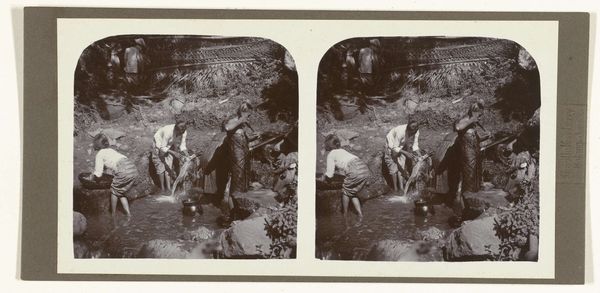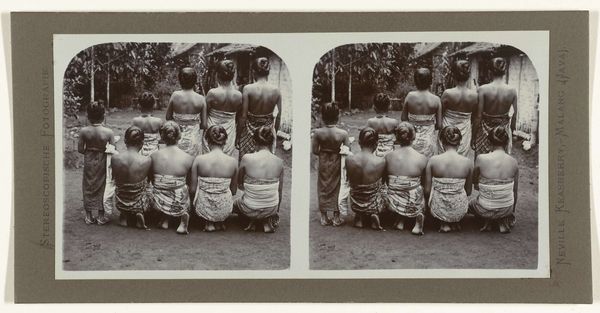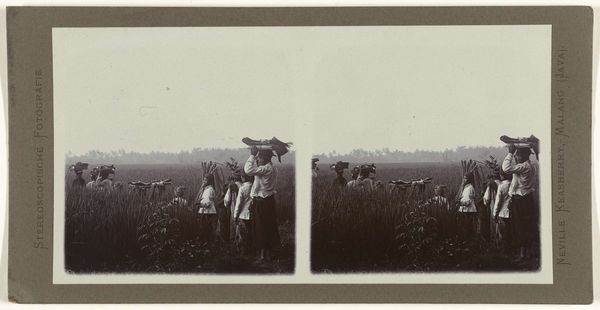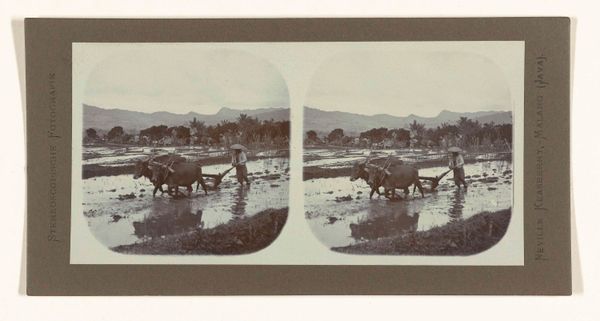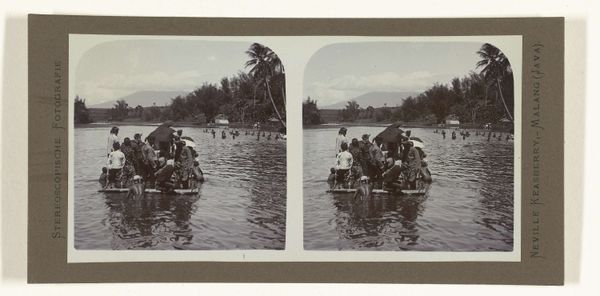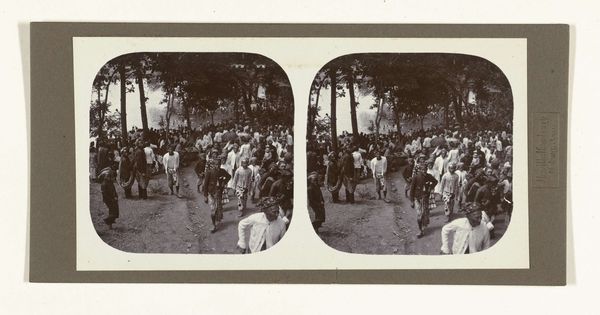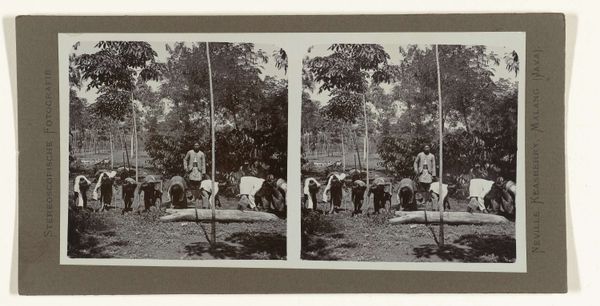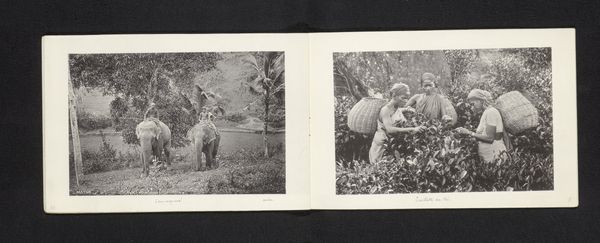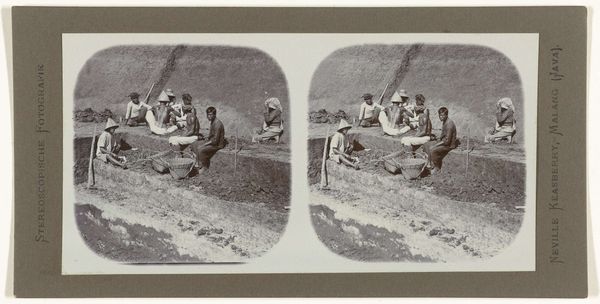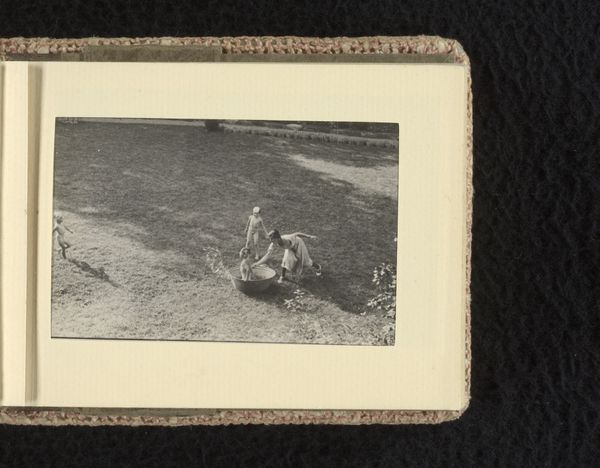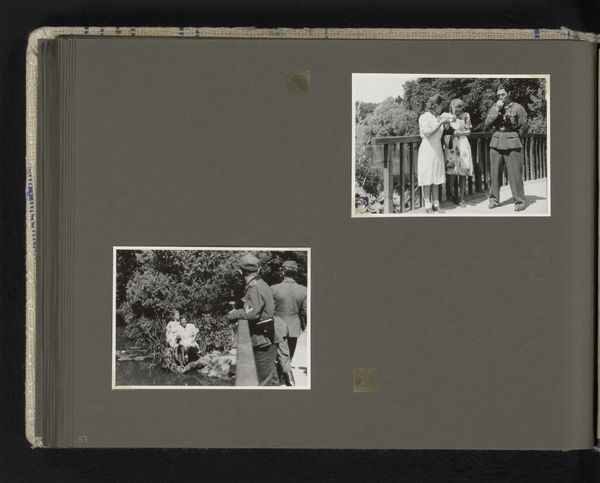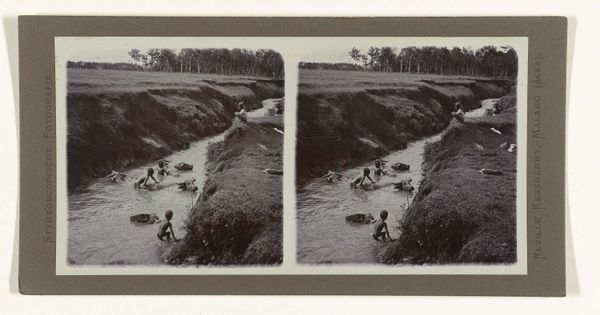
photography, albumen-print
#
portrait
#
landscape
#
indigenism
#
photography
#
orientalism
#
genre-painting
#
decorative art
#
albumen-print
Dimensions: height 76 mm, width 152 mm
Copyright: Rijks Museum: Open Domain
Editor: This is "Bathing Javanese Women in a Sarong" by Neville Keasberry, created sometime between 1900 and 1935. It's an albumen print and feels...voyeuristic, almost anthropological. What's your take? Curator: Immediately, I see the albumen print not just as a window onto a scene, but as a *commodity* in itself. Its production involved the extraction of materials, labor of both the photographer and the subjects, and a system of distribution reflecting colonial power dynamics. How are these women being *consumed* as images? Editor: So, it's less about the landscape, and more about the process of taking the photograph itself? Curator: Precisely. Consider the sarongs they're wearing. These weren't simply garments; they were textiles produced through complex processes, carrying cultural and economic weight. The photographic process itself—the darkroom chemicals, the paper, the printing techniques—all speak to industrial processes shaping that time. Where was the albumen sourced? Who printed this image? Editor: I never considered the supply chain of art itself before! I was too focused on what was shown, and less on the means of production. Curator: And consider the word ‘Stereoscopische’ in the margin, alongside the name ‘Keasberry, Malang, Java’: a company branding its production and origin. The photograph thus documents more than an act of bathing, revealing global networks of extraction, industrial manufacture, and representation. Editor: That completely changes how I see it. I'm so used to thinking about artistic vision, but the tangible reality of its creation seems even more impactful here. Curator: The beauty and exoticism were strategically crafted commodities, fueled by the processes of a global economy, the details hidden within the sepia tones.
Comments
No comments
Be the first to comment and join the conversation on the ultimate creative platform.
